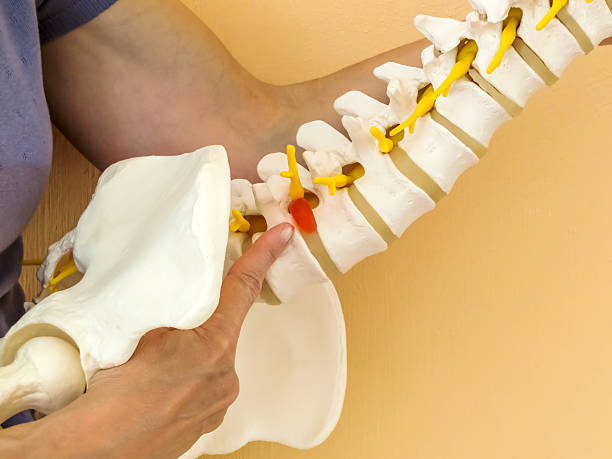
If a person's spinal nerves are compressed and irritated, the result is the cauda equina disorder (CES). If left untreated, CES can lead to severe pain, weakness, and bladder or bowel problems.
To diagnose CES requires a thorough medical history as well as a neurological examination. Imaging tests like an MRI will allow you to determine the source of pressure that is affecting the spinal cord.
Pain
From the brain the spinal cord extends down to the lower back (lumbar spine). This passageway contains nerves that relay and receive signals regarding organ function, movement as well as sensory information.
Cauda Equina syndrome can be described as a condition in which the bundle of nerves at one side of the spinal chord, the cauda-equina (or cauda equina) is squeezed by disks and other structures located in the lower lumbar area of the spine. If not treated, it can cause permanent paralysis as well as bladder or intestinal problems.
A doctor will take an extensive history, and then perform a physical exam to diagnose CES. They then ask about your pain, numbness as well as other signs and recommends x-rays magnetic resonance imaging (MRI) and myelograms to determine the root of the issue.
Numbness
Cauda equina Syndrome (CES) could be an emergency medical situation that might require surgery to ease the pressure placed on the spinal nerve roots. This may prevent nerve damage and paralysis.
The cauda-equina, which is a bundle of spinal neural roots that are located at the lower end the spinal cord is referred to as the "saddle region". They look like the tails of horses, and offer a sense of touch to the buttocks and genitals. Also, there is a zone between them that is known as "saddle area".
Tingling or numbness in the saddle region is among the most frequent cauda equina syndrome claim. Leg weakness and bladder or bowel problems are often a part of the problem.
Poor Circulation
The body's circulation is healthy and keeps it moving and provides the body with oxygen. A decrease in blood flow can cause many symptoms and affect the overall health of the various organs of our body.
A lack of circulation can cause serious problems if not treated. It could also increase the chances of developing blood clots which could lead to a heart attack or stroke.
Poor circulation signs include pain, tingling, pins and needles, numbness or tingling sensations in the legs, feet, hands, or arms. You may also experience hands and feet that are cold, swelling, bleeding, and even bruising.
Weakness
The cauda equina , also known as the cauda bundle of nerve roots that sends signals to the brain concerning sensory and motor functions in your lower limbs and pelvic region. This area can be affected by pressure.
CES is often caused by weakness, paralysis, loss of bladder control, and the loss of bladder control. This weakness can occur in multiple legs and is typically caused by damage at the spinal cord level.
It could be caused by bones spurs, herniated discs or tumors in your spine. Inflammation or infection of the spine and the complications following back surgery may result in tension on the cauda equina.
Incontinence
If the nerves that lie at the bottom of your spinal cord (the cauda equina) are compressed, you can be permanently damaged to the pelvic organs and the legs. This could lead to urinary incontinence as well as loss of bladder control and control of the bowel and sexual dysfunction and paralysis.
Your doctor will conduct a thorough medical exam to diagnose cauda-equina. He or she will assess your stability, strength of your muscles, reflexes, and alignment.
Your doctor could perform an examination of your rectal area to assess the muscles in your anal. The tone and numbness of these muscles can help determine if you suffer from cauda equina or a different health issue.